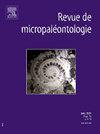三维微化石收集及其在远程微古生物学实践工作课程中的使用
IF 1
Q4 PALEONTOLOGY
引用次数: 0
摘要
微体古生物学是一门高度依赖观察和描述的自然学科,由于设备资源、样本和专业知识的有限,面临着重大的教学挑战。为了解决这些限制,我们开发了一个免费的在线微古生物学本科课程,以136个数字重建的三维微化石为中心。三维模型主要通过x射线微计算机断层扫描和其他先进的成像技术获得,代表了不同的分类类群,如有孔虫、介形虫、球石藻、硅藻和花粉。该课程在Sketchfab平台上托管,并集成在基于moodle的Unisciel学习管理系统中,分为分类章节,其中包括学习文本,带注释的3D模型观察活动和评估测验。尽管由于扫描成本和技术挑战,嵌入式模型缺乏比尺,多样性相对较低,但该课程提供了一种创新的教学方法,将远程访问交互式3D微化石与结构化学习和持续评估相结合。该资源旨在通过促进详细的形态学观察和远程分类鉴定来改善微古生物学教育,克服传统教学环境中的常见障碍。初步反馈强调了混合式学习适应的潜力,并强调了持续评估以优化教育成果的必要性。该课程和3D收藏为进一步开发数字微古生物学工具奠定了基础,促进了更广泛的可访问性,并促进了地球和生命科学的科学培训。本文章由计算机程序翻译,如有差异,请以英文原文为准。
A 3D microfossil collection and its use in a remote micropaleontology practical work course
Micropaleontology, a naturalist discipline relying heavily on observation and description, faces significant teaching challenges due to limited access to equipment resources, samples, and expertise. To address these constraints, we developed a free online undergraduate course in micropaleontology centered on a pedagogical collection of 136 numerically reconstructed 3D microfossils. The 3D models, acquired mainly via X-ray microcomputed tomography and other advanced imaging techniques, represent diverse taxonomic groups such as foraminifera, ostracods, coccolithophores, diatoms, and pollen. Hosted on the Sketchfab platform and integrated within the Moodle-based Unisciel learning management system, the course is structured into taxonomical chapters featuring learning texts, observation activities with annotated 3D models, and evaluation quizzes. Despite limitations including the absence of scale bars on embedded models and the relatively low diversity due to scanning costs and technical challenges, the course offers an innovative pedagogical approach combining remote access to interactive 3D microfossils with structured learning and continuous assessment. This resource aims to improve micropaleontology education by facilitating detailed morphological observation and taxonomic identification remotely, overcoming common barriers in traditional teaching settings. Preliminary feedback highlights the potential for blended learning adaptation and underscores the need for ongoing evaluation to optimize educational outcomes. The course and 3D collection serve as a foundation for further development of digital micropaleontology tools, promoting wider accessibility and fostering enhanced scientific training in Earth and Life Sciences.
求助全文
通过发布文献求助,成功后即可免费获取论文全文。
去求助
来源期刊

REVUE DE MICROPALEONTOLOGIE
PALEONTOLOGY-
CiteScore
2.50
自引率
0.00%
发文量
17
期刊介绍:
La Revue de micropaléontologie publie 4 fois par an des articles de intérêt international, consacrés à tous les aspects de la micropaléontologie. Les textes, en anglais ou en français, sont des articles originaux, des résultats de recherche, des synthèses et mises au point, des comptes rendus de réunions scientifiques et des analyses de ouvrages. La revue se veut résolument ouverte à tous les aspects de la micropaléontologie en accueillant des travaux traitant de la systématique des microfossiles (et de leurs équivalents actuels), des bactéries aux microrestes de vertébrés, et de toutes leurs applications en sciences biologiques et géologiques.
 求助内容:
求助内容: 应助结果提醒方式:
应助结果提醒方式:


